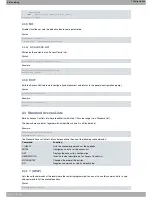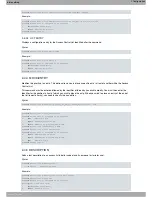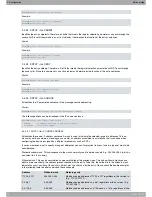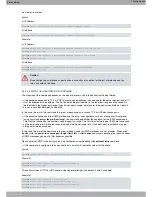
NO
Negates a command or sets its default value.
2.5.1 ? (HELP)
This command is used to list the valid commands at the level the router is programmed. You can also use this com-
mand after a specific command to list the available options.
Syntax:
Extended Access List #>?
Example:
Extended Access List 100>?
entry
Configures an entry for this access-list
list
Displays this access-list configuration
move-entry
Moves an entry within an access-list
description
Configures a description for this access-list
no
Negates a command or sets its defaults
exit
Extended Access List 100>
2.5.2 ENTRY
Creates and modifies an entry or element in an Access Control List.
This command must always be entered followed by the register number identifier and a sentence.
A new entry is created every time you enter this command followed by an identifier that is not in the list. Entering an
identifier that already exists means that the value of the parameter introduced will be modified.
Syntax:
Extended Access List #>entry <id> <parameter> [value]
The configuration options for an Extended entry are as follows:
Extended Access List 100>entry 1 ?
default
Sets default values to an existing or a new entry
permit
Configures type of entry or access control as permit
deny
Configures type of entry or access control as deny
source
Source menu: subnet or port
destination
Destination menu: subnet or port
protocol
Protocol
protocol-range
Protocol range
connection
IP connection identifier (rule)
description
Sets a description for the current entry
ds-field
DSCP in IP packets
precedence
Precedence in IP packets
tcp-specific
Tcp specific filtering
tos-octet
TOS octet value in IP packets
no
Negates a command or sets its defaults
2.5.2.1 ENTRY <id> DEFAULT
Sets all parameters for an Extended entry to its default values.
These are:
• PERMIT
• SOURCE: 0.0.0.0/0
• DESTINATION 0.0.0.0/0
• NO PROTOCOL-RANGE
• NO TOS-OCTET
• NO CONNECTION
• NO TCP-SPECIFIC
Syntax:
bintec elmeg
2 Configuration
Access Control
13






























